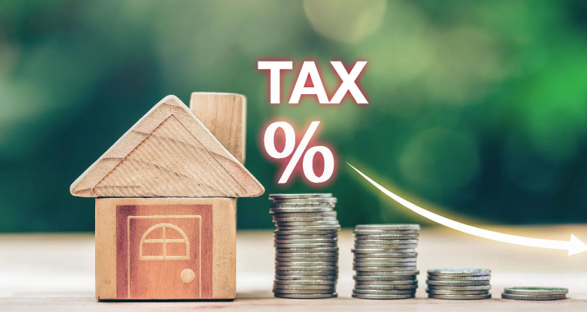Owning a place you can call home is a big deal today due to skyrocketing real estate prices. The reason is that the cost of buying a home is high, and most people don’t possess enough savings to invest in a new home. Therefore, they look for alternative financing options. Home loans offer a great way to purchase or construct a new home. It can also help you save funds on taxes.
To encourage homeownership, the Indian government provides various tax benefits and deductions to homebuyers. Two such deductions are Section 80EE and Section 80EEA of the Income Tax Act. Many people are not fully aware of the tax benefits of a home loan. Let’s explore what these two sections entail and how to save money on taxes. Further, we will also explore a contrasting analysis of these two sections- 80EE vs 80EEA.
Understanding Section 80EE
One of the most important sections of the Indian Income Tax Act for people with a home loan is Section 80EE. It was introduced in the Union Budget of 2013 and applies to first-time homebuyers. It offers tax benefits on the interest component of residential property loans. The deduction is available for the interest paid on home loans up to a maximum of INR 50,000 per annum. Homeowners can continually avail of this deduction until they have repaid the loan.
Eligibility to Claim Deductions Under Section 80EE
Now that we understand what Section 80EE entails, let’s jump into how you can claim this deduction. The following conditions must be met to avail of this benefit.
- The taxpayer mustn’t own any residential property (house) on the date of sanction.
- The loan amount should be less than INR 35 lakhs.
- The value of the property should not be over INR 50 lakhs.
- The deduction can only be claimed once and is available for a maximum of two years.
Understanding Section 80EEA
Section 80EEA was introduced in the Union Budget of 2019 and applies to first-time homebuyers. The deduction is available for the interest paid on home loans up to a maximum of INR 1.5 lakhs per annum. It’s important to note that the value of the property/home should not be greater than INR 45 lakhs. Eligibility to Claim Deductions Under Section 80EEANow that we know what Section 80EEA entails, let’s dive into the eligibility for this deduction. The following conditions must be met to avail of this benefit:
- The loan must be sanctioned between 1st April 2019 and 31st March 2023.
- The stamp duty value of the property should not exceed INR 45 lakhs.
- The taxpayer must be a first-time homebuyer.
- The deduction can only be claimed once and is available for the entire loan tenure.
Eligibility to Claim Deductions Under Section 80EEA
Now that we know what Section 80EEA entails, let’s dive into the eligibility for this deduction. The following conditions must be met to avail of this benefit:
- The loan must be sanctioned between 1st April 2019 and 31st March 2023.
- The stamp duty value of the property should not exceed INR 45 lakhs.
- The taxpayer must be a first-time homebuyer.
- The deduction can only be claimed once and is available for the entire loan tenure.
How to claim 80EE and 80EEA deductions?
Claiming deductions under sections 80EE and 80EEA of the Income Tax Act is an excellent way to reduce the tax burden on homebuyers in India. Here are the steps you need to follow to claim these deductions
1. Determine your eligibility
The first step in claiming deductions under Section 80EE or 80EEA is to determine whether you are eligible. These deductions are available only to individuals and not to HUFs or companies.
2. Check the amount of deduction available
Once you have determined your eligibility, you must check the available deduction amount. Under Section 80EE, you can claim a deduction of up to Rs. 50,000 on the interest paid on your home loan. Under Section 80EEA, you can claim a deduction of up to Rs. 1.5 lakh on the interest paid on your home loan.
3. Check the terms and conditions
Both Section 80EE and 80EEA have certain terms and conditions that need to be fulfilled to claim the deduction. For instance, under Section 80EE, the loan amount must be less than INR 35 lakh, and the property’s value must be less than INR 50 lakh. Under Section 80EEA, the loan must have been sanctioned between 1st April 2019 and 31st March 2021, and the property’s value must be less than INR 45 lakh.
4. Prepare the required documents
To claim deductions under these sections, you need to submit certain documents. These include a copy of the loan agreement, a copy of the sanction letter, and a certificate from the lending institution stating the amount of interest paid during the year.
5. File and verify your tax return
To claim these deductions, you need to file your tax return. In your tax return, you must mention the interest paid on your home loan, and the deductions claimed under Section 80EE or 80EEA. It’s also vital to verify your ret








